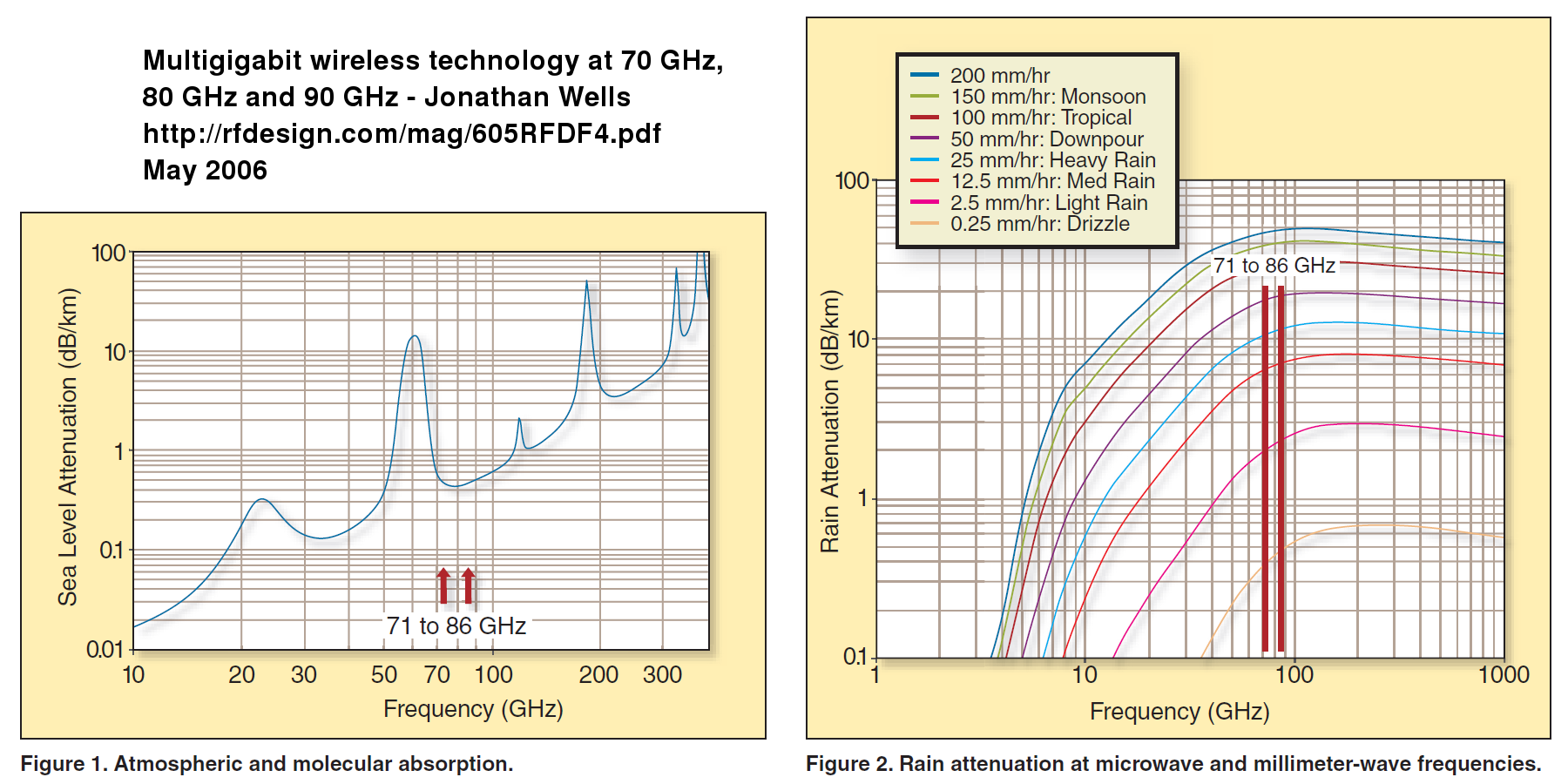Microwave Radio Bands
Frequency |
Wavelength |
Band Names |
Usage |
|||
GHz |
GHz |
mm |
mm |
IEEE |
NATO |
|
1.0 |
2.0 |
299.8 |
149.9 |
L |
D |
|
2.0 |
4.0 |
149.9 |
74.9 |
S |
E/F |
|
3.0 |
30.0 |
100.0 |
10.0 |
SHF (ITU 10) |
|
|
4.0 |
8.0 |
74.9 |
37.5 |
C |
G/H |
first satellites, wifi |
8.0 |
10.0 |
37.5 |
30.0 |
|
I |
|
8.0 |
12.0 |
37.5 |
25.0 |
X |
|
|
10.0 |
20.0 |
30.0 |
15.0 |
|
J |
|
12.0 |
18.0 |
25.0 |
16.7 |
Ku |
|
|
18.0 |
26.5 |
16.7 |
11.3 |
K |
|
|
20.0 |
40.0 |
15.0 |
7.5 |
|
K |
|
26.5 |
40.0 |
11.3 |
7.5 |
Ka |
|
Iridium Next (rain sensitive) |
30.0 |
300.0 |
10.0 |
1.0 |
EHF (ITU 11) |
|
|
30.0 |
50.0 |
10.0 |
6.0 |
Q |
|
|
40.0 |
60.0 |
7.5 |
5.0 |
U |
L |
|
50.0 |
75.0 |
6.0 |
4.0 |
V |
|
|
60.0 |
90.0 |
5.0 |
3.3 |
E |
|
|
60.0 |
100.0 |
5.0 |
3.0 |
|
M |
|
75.0 |
110.0 |
4.0 |
2.7 |
W |
|
|
90.0 |
140.0 |
3.3 |
2.1 |
F |
|
|
110.0 |
170.0 |
2.7 |
1.8 |
D |
|
|
110.0 |
300.0 |
2.7 |
1.0 |
mm |
|
|
speed of light = 299.792 mm-GHz
Server Sky bands
Server sky will use three radio bands:
- Intra Array: very high bandwidth cellular connections between thinsats in one array
- Inter Array: long distance communication between thinsat arrays
Ground Link: uplink and downlink to bulk (> 100m2) and consumer (1m2) ground stations
The server sky uplink/downlink bands will be in the advanced satellite Ka microwave bands; we will count on directionality to the equatorial MEO orbit to keep from interfering with LEO or GEO uses of this band. We will use relatively narrow band uplink and high bandwidth downlink, similar to assymetrical bandwidth usage on the internet now.
Server sky is NOT intended for bent-pipe communications, or for multipoint broadcast - uplinks contain mostly queries, requests, and ACK packets, while downlinks move bulk data in response to these data requests. Bulk data upload will mostly be from specialized large-antenna ground stations, not from average meter-scale consumer antennas.
The crosslinks between arrays will be in the 60GHz bands, and chosen specifically so they do not interfere with terrestrial and other uses because of the high atmospheric absorption ( 10dB/km ) in those bands, leading to > 100dB attenuation though the atmosphere. Specifically, if we choose a band between 57 GHz and 64 GHz for long distance beams, and assume signal coding providing bit rates of 8 bits/Hz, then the data bandwidth is 50Gbps and the attenuation is 7dB/km attenuation, but the attenuation at 30 degrees through the atmosphere will be > 60dB. Random-dithered sidelobe energy will probably peak at less than 30dB below our main beams to other arrays, so the peak interfering signal arriving at the ground in temperate latitudes will be 90 dB lower than the main beam.
Upwards beams towards GEO cross-array communication in these bands will be a problem; hopefully, agile radios in thinsat arrays can take over that function and extend the capabilities of those hypothetical GEO satellites rather than interfere with them.
If we choose microwatt intra-array communications in the 70-90 GHz range, very little will reach the the atmosphere or other orbits; microwave-band radiation from the sun will be much higher.
